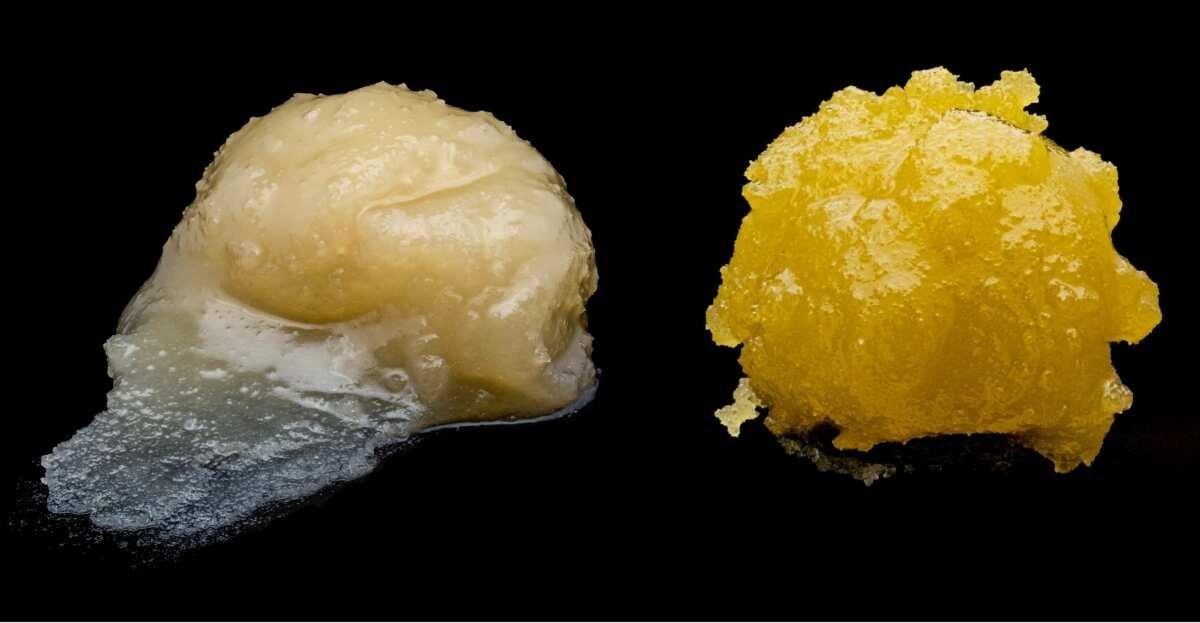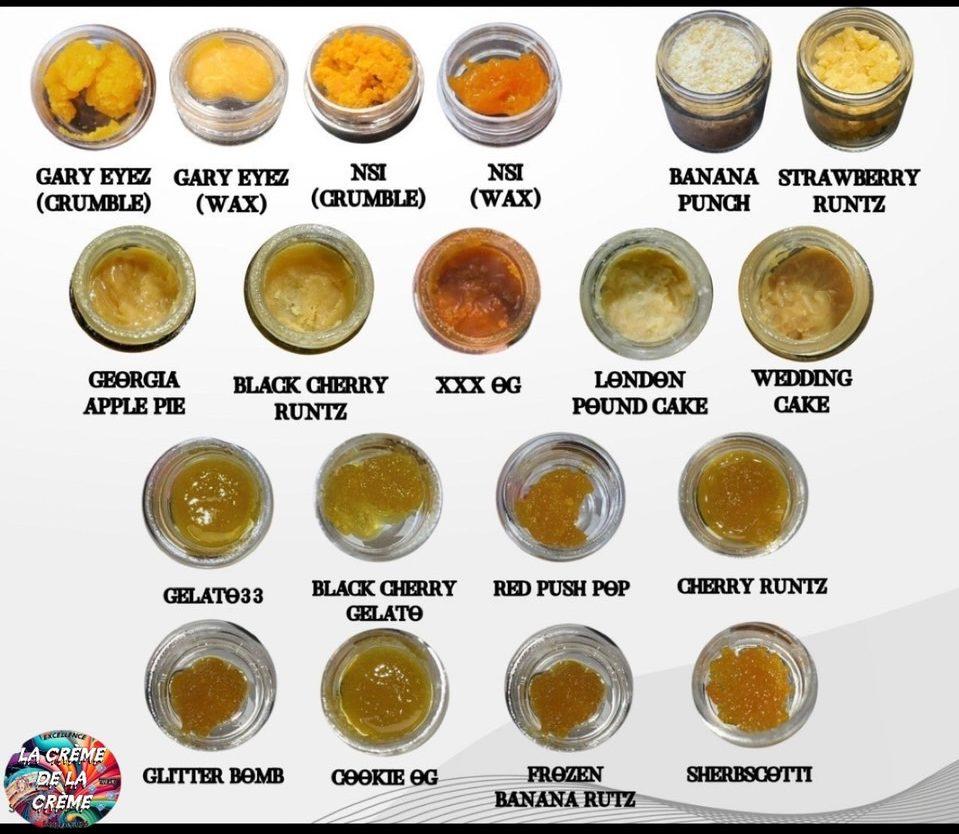in the vibrant world of cannabinoid extraction, enthusiasts often find themselves navigating a labyrinth of terms and techniques, each promising to unveil the essence of the cannabis plant in unique ways. Among thes, the terms “hash rosin” and “live rosin” frequently emerge, leading to much curiosity and sometimes confusion. While both products boast a rich flavour profile and potent effects, their production methods and underlying characteristics paint a captivating picture of difference and similarity. this article aims to dissect these two popular forms of rosin, exploring their distinct identities while illuminating the artistry and science behind the extraction process. So,whether you’re a seasoned connoisseur or a curious newcomer,join us as we delve into the nuanced world of hash rosin and live rosin to uncover the truth behind these beloved cannabis concentrates.
Exploring the Extraction Processes Behind Hash Rosin and Live Rosin
When it comes to understanding the nuances between hash rosin and live rosin, a deep dive into the extraction processes reveals their unique characteristics. Hash rosin is typically produced by utilizing dried cannabis flowers that go through a mechanical separation method. This process predominantly involves:
- Ice Water Extraction: Cannabis is mixed with ice water, which causes trichomes to become brittle and fall off the plant material.
- Filtration: The mixture is then filtered through various mesh bags, allowing only the trichomes – the glands where cannabinoids and terpenes are concentrated – to pass through.
- Heat and Pressure: the collected trichomes are subjected to heat and pressure,turning them into a viscous,golden substance known as hash rosin.
Conversely, live rosin offers a different approach that sets it apart in terms of flavor and aroma. The extraction begins with freshly harvested cannabis that is frozen immediately after harvest, preserving its terpene profile. The crucial steps include:
- Flash Freezing: The cannabis is quickly frozen using liquid nitrogen, which captures the essential oils that contribute to its flavor and scent.
- Wet Sifting: Similar to hash rosin, wet sifting is employed, but the plant material remains fresh and intact throughout the process.
- Pressing: The frozen trichomes are then pressed under heat and pressure, resulting in a more aromatic and flavorful concentrate that beautifully captures the plant’s essence.
Understanding the Difference in Terpene Profiles and Flavor Experiences
The terpenes present in cannabis extracts are vital for influencing not only the aroma but also the overall flavor experience. When comparing hash rosin and live rosin, it’s essential to consider how their respective terpene profiles impact the nuances of taste. Both types of rosin can develop unique flavor profiles,influenced by the genetic makeup of the cannabis strain used,as well as the extraction process utilized. While hash rosin is created from dried and cured buds, live rosin is distinctly derived from freshly harvested, frozen flowers, leading to a more vibrant and diverse terpene profile.
Exploring the specific terpenes found in each type can further illustrate the differences. for example, the terpene profile of live rosin often contains higher concentrations of myrcene and limonene, which are known for their fruity and citrusy notes. On the other hand, hash rosin might exhibit a more subdued profile, dominant in terpenes like caryophyllene and pinene, giving it a spicier and earthier flavor. Such variations bring forth different sensory experiences, which can elevate the enjoyment of the product based on personal preferences.
| rosin Type | Common Terpenes | Flavor Notes |
|---|---|---|
| Live Rosin | Myrcene, Limonene, terpinolene | Citrusy, Fruity, Fresh |
| Hash Rosin | Caryophyllene, Pinene, Linalool | Earthy, Spicy, Herbal |
Ultimately, the method of extraction plays a crucial role in how these terpenes are preserved and expressed. Since live rosin is processed immediately after harvesting, it captures the full spectrum of flavors and benefits from the plant. In contrast, the curing and drying process of hash rosin may result in some loss of these delicate flavors. For enthusiasts seeking the moast flavorful experience, the distinction between the two becomes paramount. Embracing these differences can elevate understanding and appreciation of cannabis, making each consumption experience unique and enjoyable.
Assessing Potency: How Hash Rosin Compares to Live Rosin
When evaluating the potency of hash rosin versus live rosin, it’s essential to recognize that both concentrates boast extraordinary qualities but differ in their production processes and resulting effects. Hash rosin is derived from hash made from dried cannabis flowers, which are often pressed to extract their essential compounds. This method typically yields a more potent product, reflecting the high THC content retained through the extraction stages. In contrast, live rosin is produced from fresh, frozen cannabis, preserving additional terpenes and flavor profiles that can create a more flavorful experience, albeit sometimes at a slightly lower potency.
The differences in potency can be visually represented as follows:
| Type | Typical THC Content | Flavor and Aroma |
|---|---|---|
| Hash Rosin | 70-85% | Rich and potent |
| live Rosin | 60-75% | Fresh and terpy |
In essence, selecting between hash rosin and live rosin hinges on the individual’s preferences for effects, flavor, and aroma. Users seeking a more robust and intense experience may gravitate toward hash rosin for its higher cannabinoid concentrations. Conversely, those aiming for a full-spectrum experience that celebrates the plant’s natural flavors and aromas may favor live rosin. Ultimately, understanding these profiles is key for consumers looking to tailor their cannabis experience to best suit their needs.
The Role of Freshness: Why Live Resin Matters for Quality
The essence of quality in cannabis concentrates largely hinges on freshness, notably when it comes to live resin. Unlike traditional extraction methods, live resin is made from fresh, flash-frozen plants, preserving the delicate spectrum of terpenes and cannabinoids. This process ensures that the final product retains the original profile of the plant, delivering a robust flavor and a potent experience that many cannasseur enthusiasts have come to appreciate.
When comparing live resin to traditional concentrates, it’s essential to recognize the advantages that come with freshness. The benefits of using fresh plant material include:
- Enhanced Flavor: The preservation of terpenes results in a richer, more complex flavor profile.
- Stronger Effects: Freshness can lead to a more potent product, providing a stronger therapeutic or recreational experience.
- Improved Aroma: The unique aromas of the plant are maintained, offering a sensory journey that appeals to seasoned users.
In essence, live resin performs exceptionally well in capturing the true nature of the cannabis plant, standing in stark contrast to other extraction methods that may utilize dried materials. The result is a concentrate that not only boasts higher quality but also invites users to explore the nuances of their favorite strains more deeply. As the industry continues to evolve, prioritizing freshness will remain a cornerstone in producing superior cannabis concentrates.
Choosing Between Hash Rosin and live Rosin: A Consumer’s Guide
When considering the world of cannabis concentrates, it’s essential to understand the differences between hash rosin and live rosin. Both are solventless forms of extraction, appealing to consumers seeking a cleaner experience. However, the methodologies and source materials differ significantly. Hash rosin is made using dried cannabis flowers or hash, where pressure and heat are applied to extract the resin. In contrast, live rosin is produced from freshly harvested, frozen cannabis plants, which are processed immediately to preserve the full spectrum of terpenes and cannabinoids.
One of the key distinctions that might affect consumer choice is the flavor profile and aromatic properties. Because live rosin utilizes fresh plant material, it often boasts a more vibrant and complex flavor that captures the essence of the original strain. In contrast, hash rosin may have a slightly different taste due to the curing process of the flowers used. Here’s a quick comparison to keep in mind:
| Feature | Hash Rosin | Live Rosin |
|---|---|---|
| Source Material | Dried flowers or hash | Fresh frozen flowers |
| Flavor Profile | Earthy, robust | Bright, floral, complex |
| Processing Method | Heat and pressure extraction | Immediate freezing and extraction |
Another consideration is the potency and consistency of the product. Both hash rosin and live rosin can offer high levels of cannabinoids, but the extraction process influences their final characteristics. Consumers might find that while hash rosin tends to yield a stable consistency ideal for dabbing or incorporating into edibles, live rosin might offer a more variable texture due to the freshness of its starting materials.Ultimately, the choice between the two may come down to personal preference regarding flavor, extraction style, and intended use, making education on each a crucial part of the consumption experience.
Best Practices for Storage and Consumption of Rosin Products
When it comes to storing rosin products, temperature control is crucial. Ideally, you should keep your rosin in a cool, dark place, away from direct sunlight and heat sources that can degrade its quality. Refrigerators are often the perfect surroundings,but ensure that the products are in airtight containers to prevent moisture and contamination. Consider using materials like glass jars or silicone containers, which can help maintain the integrity of the product and prevent it from sticking or losing potency.
Proper consumption methods also play a important role in enjoying rosin. For optimal flavor and effectiveness, use low-temperature dabbing techniques, as high heat can burn off the terpenes that give rosin its distinct flavor and aroma. Investing in a reliable dab rig or vaporizer specifically designed for concentrates can enhance your experience. Additionally,using tools such as wax carb caps can improve airflow and temperature during dabbing,allowing you to savor every subtle note of your rosin.
To further enhance your understanding of different rosin varieties, consider the following comparison of common types. Knowledge of these can aid in choosing the best product for your needs:
| Type of Rosin | Characteristics | Best Use |
|---|---|---|
| Hash Rosin | Derived from bubble hash,rich in flavor | Ideal for dabbing and adding to joints |
| Live Rosin | Made from fresh-frozen plant material,preserves terpenes | Best for connoisseurs seeking authentic flavors |
In Conclusion
In the intricate world of cannabis concentrates,understanding the nuances between products can enhance your appreciation and experience. As we’ve explored, hash rosin and live rosin share foundational elements but diverge in their processes and characteristics. While both offer pure, solventless options celebrated for their flavor and potency, the choice between the two ultimately rests upon personal preference and the desired sensory experience. Whether you lean towards the traditional charm of hash rosin or the fresh vibrancy of live rosin, what remains clear is that both capture the essence of the cannabis plant in unique, compelling ways. So, as you navigate your journey through the myriad of concentrates, remember that each type has its own story to tell-a story waiting to unfold with every dab or puff. Happy exploring!

